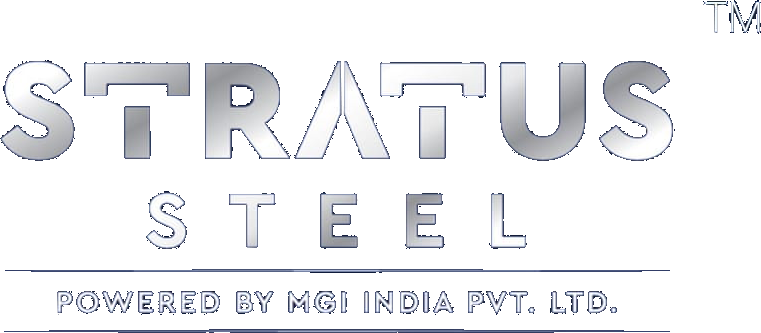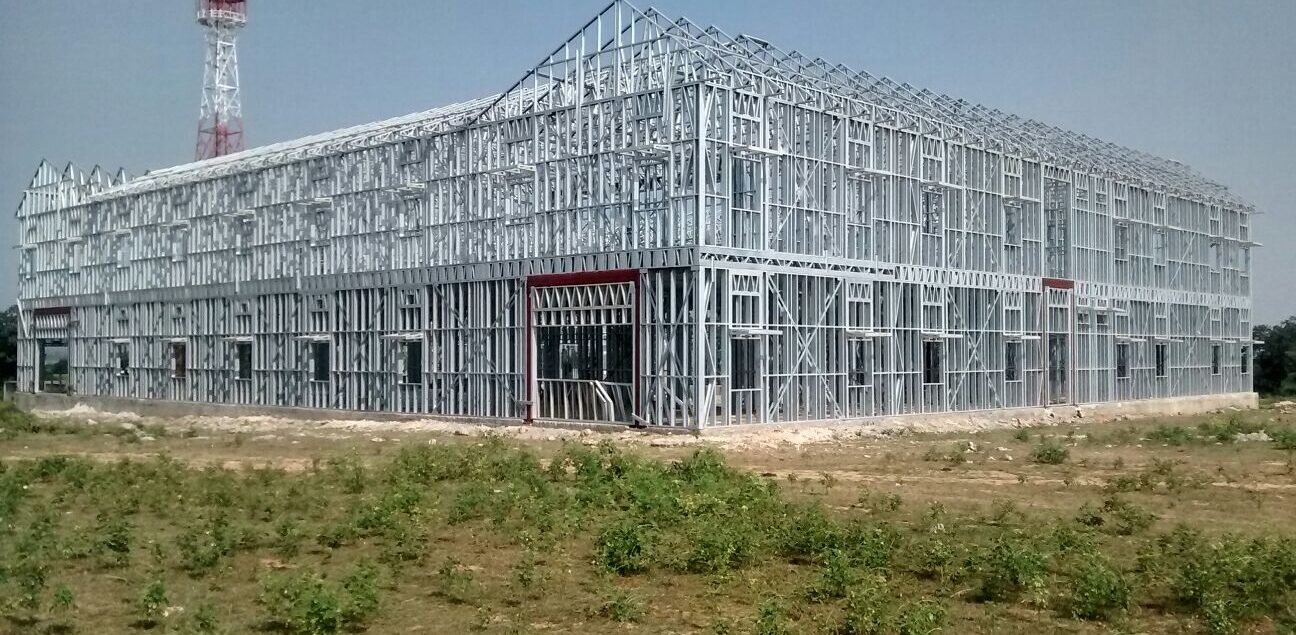The adoption of LGSF technology in India
The LGSF technology has seen a rapid rise in the demand for mass affordable housing projects. There is a need for rapid construction with precision, LGSF provides just that. Its ease of installation along with a reduction in the cumulative project completion period owing to prefabricated structures is anticipated to drive product demand significantly over the next few years. The need to lower the production costs involved in the construction of buildings is also estimated to be one of the key factors responsible for market growth. LGSF comes with various advantages and can be used in an array of applications. One of the renowned organisation providing LGSF technology in India is Stratus Steel.
The organisation is a pioneer in modular operation theatre manufacturers with over 35 years of experience and expertise in light gauge steel framing, cold-rolled sections, drywall construction, roofing solutions, etc. in India. The organisation also provides LGSF design support and an array of comprehensive back-end support for all LGSF projects.

Constrofacilitator had a one-to-one discussion with Vidur Chandra, Managing Director, Stratus Steel, LGSF division of MGI India. He believes that LGSF has far better scope in the contemporary world and it mustn’t be limited to one company keeping it within closed doors. This is when he got Stratus Steel in as another brand to expand his canvas and further the scope of work. During the conversation, he shared insights on the adoption of LGSF technology, the benefits of cold-formed steel, market drivers for LGSF solutions in India and much more.
Here are the excerpts of the interview.
- How LGSF technology is growing and getting adopted in India?
According to a recent study, prefabricated steel construction covers only 25% of the overall Indian real estate market and sums up to about $150 billion. However, industry experts claim that the boom is yet to come for the prefabrication construction method in India and several other neighbouring countries.
LGSF is amongst the latest construction concepts that have taken the market by storm, but yet there are various misconceptions about prefab structures. Many builders feel that these are still relying on traditional building structures, but as the market is evolving, the market is getting ready to accept this methodology, and the scenario is changing.
Currently, the primary users of the LGSF structures are corporations, but with time these prefab structures are slowly and steadily finding their way into residential real estate.
Hence, there is an immediate need to create more awareness among the common people, popularise the concept and extensively adopt prefabricated structures to increase efficiency. quality, and speed of construction, while reducing cost and additional efforts.
- What are the benefits of cold-formed steel (CFS) construction?
Steel is inorganic, and thus impervious to termites, rot, and mold. A protective layer of zinc and other metallic coating steel provides long-term durability that research demonstrates can last hundreds of years without any deterioration.
Durability.
Steel is inorganic, and thus impervious to termites, rot, and mold. A protective layer of zinc and other metallic coating steel provides long-term durability that research demonstrates can last hundreds of years without any deterioration.
Stability.
Due to its consistent chemistry, steel behaves in a highly predictable manner when subjected to the structural loads and stresses imposed by high wind and seismic forces. Because steel cannot absorb moisture, its use also eliminates most of the expansion and contraction of construction materials that produce cracks, warps, and other defects in both internal and external finishes.
Non-combustibility.
Steel does not burn and will not contribute to the spread or intensity of a fire. Because of this, cold-formed steel projects can easily be designed to meet code fire rating requirements. Non-combustible structures, like those built with cold-formed steel framing, have a better loss history than combustible wood framing. This often translates into lower costs and broader coverages for many types of construction insurance. Read more in this white paper.
Sustainability.
Steel is the only building material that is infinitely recyclable. As a recognized green building material, cold-formed steel framing projects can earn credits for green building ratings such as LEED and similar programs.
Cost-effectiveness.
Cold-formed steel offers cost savings on several fronts. By helping to minimize fire risk, the use of cold-formed steel results in lower insurance costs for builders and owners. Additionally, panelized cold-formed steel construction methods produce shorter construction cycles, allowing builders to complete steel-framed projects months faster than with other framing materials. Finally, framing with cold-formed steel generates far less material waste than traditional wood framing.
SFIA and other organisations continue to work to encourage the development of industry standards, building codes, and construction methods that maximize these unique qualities of cold-formed steel framing.


- How has the PMAY Awas Yojana project of the Government of India given impetus to the adoption of LGSF technology?
Abiding by Pradhan Mantri Awas Yojana’s vision of ‘Housing For All’, the LGSF technology has been developed around this ideology for producing faster mass housing in India. The focus is on the ‘double-the-speed’ concept compared to the traditional mode of construction. LGSF frames are flexible, lightweight, and manufactured and disassembled off-site, they can be quickly assembled and installed on-site, making them ideal for mass housing. This form of dry construction also requires minimal manpower. For high-rise buildings in mass housing light gauge steel reduces the entire weight of the building as finishing is quite superior.
Light Gauge Steel has given way to faster, affordable and quality homes thereby serving the PMAY purpose.
- What are the market drivers for LGSF solutions in India?
LGSF has stepped in as an innovative and revolutionary technology when older technologies were failing in various aspects of construction.
Light Gauge Steel paved the way for faster, durable, affordable, and hassle-free solutions. Its unmatched design flexibility, as well as relocation & expansion abilities, have proven game-changers for the construction industry.
Light gauges steel framing systems have advantages like adaptability, off-site manufacturing, reusability, recyclability, cost efficiency, and resource efficiency making it one of the most sustainable building methods available today. Light gauge framing systems can fulfill the requirements of small buildings with cost-effectiveness and environmental friendliness making light-gauge steel construction, a technology with huge growth potential and applicability.
- Share insights on the advantages of Houseable modular homes.
Houseable is an architecture, engineering, and design firm focused on building spacious, sustainable homes best suited for you. We aspire to be one of the leading modular homes firms in India.
We build using superior Light Gauge Steel Framing (LGSF) technology and offer well-thought-out and carefully designed plans.
While our main purpose is to deliver a home that is built around you, we also ensure your time, money, and effort in achieving your home are minimized.

- Prefabricated homes are gaining popularity for multiple reasons from affordable living to adding flexibility, what added advantages are being provided by Houseable prefab homes?
Our prefab homes comes with following advantages;
- One-stop solution provider right from architectural services to finishing
- Factory controlled manufacturing
- One of its kind Home Builder in India
- Working with some innovative cladding solution providers to achieve the best results
- Discuss a few challenging projects undertaken by the company?
Stratus has always developed and supported new clads. For our latest project, a 6000 sq ft bungalow in Delhi, we used ferrocement panels. Since this was our first time using these panels on a project of this scale, it was quite the challenge but we powered through and built the beautiful home for our clients. We built a G+13 Bungalow, a residential tower in Jammu, the first of its kind as a hybrid structure. We used hot roll for support and LGSF for infill walls. We, with our partner in Kerala, have been constructing 3 to 5 storey homes under the PMAY. This has been challenging in its own way due to the fixed design and PMC guidelines one has to consider.



